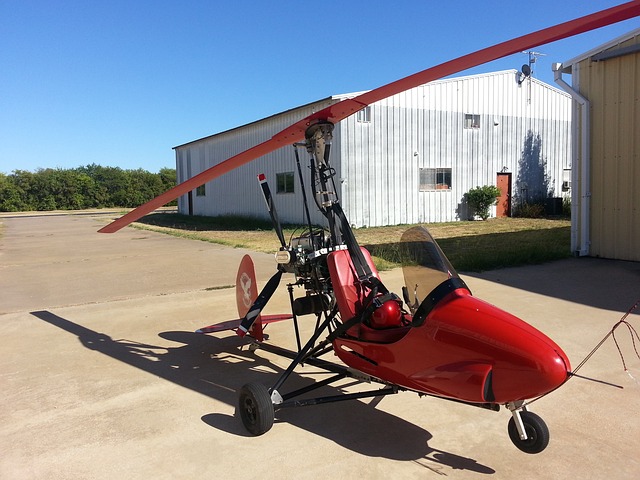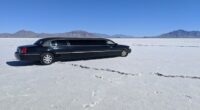Helicopters and autogyros are both aircrafts that are powered by a rotor; however, they differ in numerous ways. Helicopters have an engine to power the main rotor which allows for vertical takeoff and landing capability, whereas autogyros rely on their propellers to generate lift for takeoff but do not benefit from having an engine in the rotor system. In addition, autogyros can glide like a plane after reaching cruising altitude while helicopters cannot perform this maneuver. Understanding these differences will help you decide which type of aircraft is best suited for your particular needs.
What is a helicopter?
A helicopter is a type of rotorcraft in which lift and thrust are supplied by rotors. This allows the helicopter to take off and land vertically, to hover, and to fly forward, backward, and laterally. Helicopters are used in a variety of applications, including transportation of goods and people, search and rescue, law enforcement, recreation, agriculture, medicine, and even the military.
There are two main types of helicopters: those with Piston engines and those with Turbine engines. Turbine-powered helicopters are generally faster and more powerful than piston-powered helicopters, but they also tend to be more expensive to operate.
What is an autogyro?
(Image by steve870 from Pixabay )

An autogyro is a rotorcraft with an unpowered rotor that is driven by aerodynamic forces generated by the forward movement of the aircraft. The autogyro was invented in 1920s by Spanish engineer Juan de la Cierva.
The distinguishing feature of an autogyro is that lift and thrust are provided by different means. Lift is provided primarily by the rotors while thrust comes from an engine-powered propeller. This configuration allows autogyros to take off and land without a runway, making them ideal for short-haul flights in remote areas.
The difference between helicopter and autogyro
There are many differences between helicopters and autogyros, but the most significant difference is how they lift off and stay in the air. A helicopter uses rotating blades to create lift, while an autogyro uses a spinning rotor to stay in the air.
A helicopter can takeoff and land vertically, while an autogyro needs a runway to take off. Helicopters can hover in one spot, while autogyros cannot. Helicopters are more maneuverable than autogyros and can fly forwards, backwards, and sideways. Autogyros can only fly forwards.
Helicopters are more expensive to maintain than autogyros because they have more complex systems. They also require more training for pilots because of the complexities of flying them.
Are autogyros and gyrocopters the same?
Autogyros and gyrocopters are both types of aircraft that use rotors for lift. However, there are some key differences between the two. Autogyros typically have a single rotor blade, while gyrocopters usually have two. Autogyros also have an engine-powered propeller, while gyrocopters typically do not. Additionally, autogyros take off and land like a helicopter, while gyrocopters can take off and land either like a helicopter or like an airplane.
Are Gyrocopters more efficient than helicopters?
There are a few key ways in which gyrocopters are more efficient than helicopters. For one, gyrocopters have less drag since their rotor blades are not constantly fighting against gravity like helicopter blades are. Additionally, gyrocopters require less power to stay airborne, meaning that they use less fuel overall. Finally, gyrocopters can take off and land in much smaller spaces than helicopters, making them ideal for flying in tight quarters.
Are autogyros safer than helicopters?
There are a few key reasons why autogyros are often considered to be safer than helicopters. First, autogyros are more stable in flight and are less likely to experience sudden changes in altitude or direction. This stability makes them easier for pilots to control, which can help prevent crashes. Second, autogyros have a lower center of gravity than helicopters, which makes them less likely to tip over or roll during landings and takeoffs. Finally, autogyros typically have larger rotor blades than helicopters, which gives them more lift and makes them less likely to stall in mid-air.
What are two disadvantages of Autogyros?
There are two main disadvantages of autogyros: They are less efficient than helicopters and They are not as widely used.
Autogyros are not as efficient as helicopters because they rely on the wind to rotate their blades, which means they can only fly at certain speeds. They are also not as widely used as helicopters, which means there is less support and infrastructure for them.
How high can an autogyro fly?
The autogyro is a type of aircraft that uses an unpowered rotor to create lift. The rotor is turned by the wind and the autogyro moves forward under power from an engine-driven propeller. Autogyros can fly at altitudes of up to 10,000 feet. They are commonly used in pilot training and for personal flight.
Are autogyros still used?
Autogyros were once popular aircraft, but their popularity has since declined. While a few enthusiasts still build and fly them, they are not used in any commercial or military applications.
Why do helicopter pilots fly from the right seat?
One of the main reasons why helicopter pilots fly from the right seat is because it provides them with a better field of view. When sitting in the right seat, the pilot has a clear view of the rotor blades and can see any potential hazards that may be coming up. Additionally, flying from the right seat allows the pilot to keep their hand on the collective, which is used to control the altitude of the helicopter.
Who invented autogyro?
The autogyro was invented in the early 1920s by Spanish engineer Juan de la Cierva. It is a type of rotorcraft that uses an unpowered rotor to create lift, and a separate power source (usually an engine-driven propeller) to provide thrust.
Who invented the helicopter?
(Photo by Phil W on Unsplash )

The first powered helicopter was built by French engineer Paul Cornu in 1907. However, it did not achieve true flight and only hovered a few feet off the ground for 20 seconds. American inventor Igor Sikorsky is credited with inventing the first successful helicopter in 1939.
What are the disadvantages of a helicopter?
The disadvantages of helicopters compared to autogyros are numerous. They are more expensive to buy and maintain, they require more training to fly, and they are less efficient in terms of fuel consumption. In addition, helicopters are much more susceptible to bad weather conditions and can be dangerous to fly in high winds or near thunderstorms.
How far can a helicopter fly on a full tank?
The average helicopter can fly for about 3 to 4 hours on a full tank of fuel. However, the range that a helicopter can fly will vary depending on the type of helicopter, the size of the fuel tank, and the weather conditions.
What fuel do helicopters use?
Helicopters use a variety of fuel types depending on the model and manufacturer. Some common fuels include aviation gasoline, jet fuel, and diesel. Aviation gasoline is used in smaller helicopters while jet fuel is commonly used in larger commercial models. Diesel is also gaining popularity as a helicopter fuel due to its lower cost and abundance.
How fast can a helicopter fly?
A helicopter’s top speed is determined by a number of factors, including the power of its engine, the rotor blades, and the weight of the helicopter. The most powerful helicopters can reach speeds of up to 320 kilometers per hour (200 miles per hour), but most helicopters have a top speed of around 160 kilometers per hour (100 miles per hour).
In what sense is a gyrocopter similar to a helicopter?
Gyrocopters are similar to helicopters in that they both have rotors that provide lift. However, gyrocopters have unpowered rotors, while helicopters have powered rotors. Gyrocopters also have an engine and propeller that provide thrust.
Are Gyrocopters more efficient than helicopters?
Gyrocopters are often seen as more efficient than helicopters because they do not need a tail rotor. The lack of a tail rotor makes gyrocopters more agile and easier to fly. In addition, gyrocopters typically have better fuel economy than helicopters.








